Hey there, high achievers and leaders! Ever felt like you’re juggling more tasks than you can handle? You’re not alone. Mastering strategies for managing up when you have too much work on your plate is your secret weapon not just to survive but to thrive in the fast-paced corporate world.
In this blog post, we’ll unravel the art of managing up, a skill crucial for anyone looking to steer their career ship through stormy workloads with grace. Get ready to dive into actionable insights and expert advice that will transform how you interact with your superiors and manage your overflowing to-do list. Let’s get started on this journey towards a more balanced and productive professional life!
Understanding the Concept of Managing Up
At its core, managing up is the strategic approach to fostering a productive working relationship with your superiors. It’s about understanding and supporting your boss’s needs and objectives while ensuring your career goals are acknowledged and advanced.
Managing up is not about currying favor or being a sycophant; it’s about mutual respect and the alignment of goals. By mastering this skill, you become a more valuable asset to your team and increase your own job satisfaction.
A key component of managing up involves proactive communication, which enables you to anticipate the needs of your managers and address concerns before they escalate. This preemptive approach can streamline processes and reduce misunderstandings.
Moreover, managing up is integral for career progression, as it often influences performance reviews and promotional opportunities. It’s a delicate balance of advocating for yourself while being attuned to the demands and pressures your supervisors face.
When done effectively, managing up creates a symbiotic relationship that can lead to increased trust and opportunities for mentorship. It’s a strategic advantage in the workplace that when honed, can significantly impact your professional trajectory.
Defining Managing Up in the Workplace
At its essence, managing up is an interpersonal strategy that involves an employee taking the initiative to foster a productive relationship with their supervisors. It’s about understanding your boss’s challenges and objectives and aligning them with your own professional aspirations.
This deliberate process is rooted in proactive communication, and it requires a nuanced understanding of the workplace hierarchy. By engaging in managing up, employees can influence decision-making, gain visibility, and contribute more effectively to organizational goals.
It’s a dance of diplomacy; one that necessitates finesse and a keen sense of timing. Employees must navigate their roles with an awareness of their supervisor’s preferences and pressures, all while advocating for their own career development.
The ultimate goal of managing up is to create a win-win scenario where both the employee and the manager benefit. It’s a strategic approach that goes beyond mere job performance, encompassing a broader vision of career growth and leadership development. To learn more about this concept, explore BetterUp’s insights on the subject.
Through managing up, employees can position themselves as indispensable partners in their supervisor’s success. It’s an investment in their professional future, and when executed with authenticity and strategic insight, it can elevate their standing within any organization.
The Importance of Managing Up for Career Advancement
In the intricate dance of corporate advancement, managing up stands as a pivotal performance. It’s an employee’s strategic play to align their contributions with the broader visions of their superiors, thereby securing a more prominent role in the narrative of organizational success.
At its core, managing up is an exercise in empathetic foresight—the ability to anticipate a manager’s needs and to present solutions proactively. This not only elevates the manager’s performance but also casts the employee as an indispensable ally.
By effectively managing up, employees demonstrate their capacity for leadership and their understanding of the company’s strategic imperatives. This can lead to increased visibility within the organization, positioning them favorably when opportunities for advancement arise.
Moreover, this approach to career development underscores the employee’s commitment to collective goals over individual accolades. It’s a testament to their ability to contribute to a team’s success, which is often a key consideration during performance reviews and discussions about promotions.
For a deeper dive into managing up and its impact on career growth, savvy professionals can explore the insights provided by BetterUp. In doing so, they can better understand how to leverage this approach as a catalyst for their professional journey.
Ultimately, managing up is not just about making your boss’s job easier—it’s a strategic investment in your career trajectory. It’s about demonstrating that you’re not just part of the workforce; you’re a shaping force within it.
The Role of Managing Up in Workload Management
When workloads balloon to seemingly unmanageable proportions, managing up becomes a lifeline. It’s a strategic approach that empowers employees to actively shape their workload, rather than passively drowning in it.
By adeptly managing up, you engage in a dialogue with your superiors about the prioritization of tasks, aligning them with the company’s key objectives. This isn’t just about offloading work; it’s about smartly redistributing it in ways that benefit both the employee and the organization.
A crucial aspect of managing up is the cultivation of an open channel for proactive communication. It’s about articulating your capacity and the need for realistic expectations, thereby preventing burnout and ensuring the quality of work doesn’t dip.
This communication should be framed positively, focusing on solutions and the shared goal of sustaining high performance. It’s a delicate balance, but when done right, managing up can lead to a more manageable and strategically aligned workload, which is critical for both personal well-being and professional advancement.
For those swimming in a sea of tasks, the ability to effectively manage up could be the difference between sinking and swimming. It’s a skill worth refining, as outlined in BetterUp’s comprehensive guide, ensuring that when the work wave hits, you’re ready to ride it, not wipe out.
How Managing Up Can Help with Excessive Workloads
When the weight of a burgeoning workload threatens to capsize your professional balance, managing up emerges as the keystone to staying afloat. It’s a strategic dialogue that not only clarifies your capacity but also aligns your efforts with the company’s priorities.
Through managing up, you can negotiate a realignment of responsibilities that better suits your strengths and the team’s needs. This practice requires a deft touch; it’s about articulating your workload concerns without shirking responsibility. Instead, you’re proposing a collaborative approach to task management, one that benefits the overall productivity of the team.
Proactive communication is the lifeblood of managing up, especially when your plate is overflowing. By engaging in candid conversations with your superiors, you can identify which tasks are essential and which can be delegated or deferred. This not only alleviates immediate pressure but also fosters a culture of trust and mutual support within the workplace.
Adopting this approach can transform an oppressive workload into a manageable to-do list, with the added benefit of demonstrating your strategic thinking and leadership potential. For insights on effectively managing up, consider the wealth of knowledge found at BetterUp. In the crucible of excessive work, managing up is your crucible to not just endure but excel.
The Connection Between Managing Up and Employee Retention
The intricate link between managing up and employee retention is anchored in the bedrock of job satisfaction and mutual respect. When employees feel empowered to communicate effectively and align their goals with those of their managers, a sense of agency and belonging is fostered within the organization.
This empowerment leads to a more engaged workforce, where individuals are less likely to seek opportunities elsewhere. Managing up creates an environment of collaboration and support, which is critical to retaining top talent. Employees who successfully manage up often feel more valued and understood, which directly contributes to their desire to remain with a company.
Furthermore, when employees manage up, they often experience a greater sense of control over their work lives, leading to reduced stress and burnout. This emotional well-being is a key component of employee retention, as it encourages loyalty and long-term commitment. By mastering the art of managing up, employees can help shape a workplace that not only recognizes their contributions but also supports their professional growth.
To explore this concept further, consider the insights on BetterUp’s guide to managing up, which underscores the importance of this practice in fostering a positive work environment. In essence, the ability to manage up is not just a skill for navigating heavy workloads; it’s a pivotal strategy for retaining high performers in any competitive landscape.
Strategies for Managing Up Effectively
When the workload mounts, developing and maintaining positive relationships with supervisors is paramount. It’s not about flattery; it’s about establishing a rapport based on respect and mutual understanding.
This relationship is the foundation upon which you can align your goals with your manager’s and the organization’s. When your objectives echo those of your leaders, your work resonates with purpose, making it easier to prioritize and receive support for your initiatives.
Proactive communication is crucial in managing up, especially when your plate is brimming with responsibilities. It involves not just updating your boss on progress but also sharing insights and potential roadblocks.
This openness paves the way for a collaborative approach to problem-solving and task prioritization. By being forthright about your capabilities and limits, you can negotiate your workload effectively, ensuring you deliver quality without burnout.
Setting boundaries is an art in the workplace, and it’s central to managing up. By clearly defining what you can handle, you’re not showing weakness; you’re demonstrating strategic thinking and self-awareness.
Negotiating workload doesn’t mean shying away from challenges; it means being smart about the battles you pick. For a deep dive into mastering this delicate balance, explore the guidance offered by BetterUp. Through these strategies, managing up becomes not just a survival tactic but a route to thriving in a demanding work environment.
Developing and Maintaining Positive Relationships with Supervisors
Developing a positive relationship with your supervisor is a nuanced blend of professional rapport and personal respect. It’s about consistently demonstrating your commitment to your role and the organization’s success while also showing genuine interest in your supervisor’s professional challenges and achievements.
This relationship is built on the bedrock of trust and open communication, qualities that are essential for any successful partnership. By regularly engaging in transparent dialogue, you ensure that both parties are aligned in their expectations and objectives. Such alignment is pivotal, fostering an environment where feedback is constructive and collaboration thrives.
Maintaining this positive dynamic requires a proactive approach to relationship-building. It’s not enough to simply meet expectations; you must anticipate your supervisor’s needs and exceed them when possible. This proactive stance not only showcases your initiative but also conveys your dedication to the team’s collective goals.
Equally important is the capacity to listen actively and empathize. When you actively listen to your supervisor, you’re not just hearing words; you’re understanding context, concerns, and subtext. This level of attentiveness allows for more meaningful interactions and a deeper connection, which solidifies the foundation of your working relationship.
By cultivating these practices, you create a symbiosis that transcends the conventional employee-manager dynamic. It’s a partnership that benefits both your career trajectory and the well-being of the organization.
Aligning Your Goals with Your Manager’s and the Organization’s
When we talk about aligning your goals with your manager’s and the organization’s, we’re delving into the heart of strategic career navigation. It’s about harmonizing your personal career aspirations with the overarching objectives of your team and the company at large.
This synchronization doesn’t happen by chance; it’s a deliberate and ongoing process that requires insight and adaptability. You must understand not only the explicit goals of your superiors but also the implicit expectations and the cultural nuances of your organization.
To achieve this alignment, start by setting a personal agenda that complements the company’s mission. Your individual objectives should dovetail with the broader corporate strategy, ensuring that when you succeed, the organization benefits as well.
Engage in regular discussions with your manager to stay abreast of any shifts in company direction or priorities. This level of proactive engagement is essential. It keeps you agile and prepared to realign your goals as necessary, maintaining that crucial synchrony with your manager’s vision.
A key aspect of this alignment is the ability to translate organizational objectives into daily actions. Every project you undertake, and every initiative you propose, should be a stepping stone toward these shared goals.
By consistently demonstrating your commitment to the company’s success, you cement your role as a valuable player in the corporate ecosystem. Your professional growth is then intrinsically linked to the progress of your team and the organization, a synergy that is beneficial for all involved.
For further insights into aligning your personal goals with those of your superiors, consider the expert advice outlined in BetterUp’s comprehensive guide on managing up. Through strategic alignment, you become an indispensable asset, not just a cog in the machine.
Proactive Communication and Prioritization of Tasks
Proactive communication is the cornerstone of managing up when your work plate is overflowing. It requires the foresight to anticipate challenges and the clarity to convey your needs and limitations to your supervisors.
This form of communication is not about complaining; it’s about collaborating to find solutions that align with your team’s objectives. By being forthcoming with your supervisors about your workload, you create an opportunity for dialogue around the prioritization of tasks. This not only helps in managing your workload more effectively but also demonstrates your commitment to the organization’s success.
In this context, prioritization becomes a strategic exercise, one where tasks are weighed against the company’s goals and your personal bandwidth. You must learn to distinguish between what is urgent and what is important—a skill that is crucial for ensuring your efforts are impactful and recognized.
By engaging in proactive communication, you empower yourself to negotiate the expectations placed upon you. This negotiation is not a sign of weakness; rather, it showcases your strategic acumen in aligning personal capabilities with the company’s needs.
Ultimately, mastering proactive communication and the prioritization of tasks positions you as a thoughtful leader, one who is capable of steering both personal and organizational objectives toward success. This approach doesn’t just manage up; it propels your career upward.
Setting Boundaries and Negotiating Workload
In the realm of professional growth, setting boundaries and negotiating workload is akin to navigating a tightrope—too much tilt either way, and the balance is lost. It’s a dynamic process that requires clarity in your own capabilities and a firm yet diplomatic approach to defining what you can realistically manage.
Establishing these boundaries is not about erecting walls; it’s about constructing bridges that allow for open dialogue with your supervisors. By being transparent about your limits, you foster a culture of respect and understanding. This transparency is essential for setting realistic expectations and preventing the all-too-common pitfall of overcommitment.
When it comes to negotiating workload, the key is to focus on value contribution rather than simply task completion. Engage your supervisors in discussions about the impact of your work, emphasizing the quality and outcomes over the quantity of tasks. This shift in perspective allows for a more strategic delegation of duties, ensuring that you are working on projects that best utilize your skills and drive the organization forward.
For those adept at managing up, boundary-setting and workload negotiation become tools for carving out a sustainable and impactful career path. To delve into the nuances of these strategies, consider the insights from BetterUp’s guide on managing up, which highlight the importance of these practices in maintaining both personal well-being and professional efficacy. Through these means, you not only protect your time and energy but also elevate your role to that of a strategic partner in the company’s success.
Real-World Insights on Managing Up
In the bustling corridors of the corporate world, managing up stands out as a linchpin for those aiming to navigate their careers with acumen. It’s the subtle art of shaping your relationship with higher-ups to create a mutually beneficial work environment.
Often, it’s misconstrued as mere flattery or political maneuvering, but real-world experiences underscore its true essence: a strategic partnership built on proactive communication and trust.
Consider the example of an executive assistant who adeptly manages their leader’s calendar, ensuring their boss can focus on priorities—this is managing up at its finest. It’s about understanding the bigger picture and aligning your actions to support the collective success of your team and organization.
Varun Srinivasan, former Senior Director of Platform at Coinbase, puts it succinctly, “The biggest reason people suck at managing up is because they don’t actually understand their boss’s job.” This insight reveals the crux of managing up—grasping the intricacies of your supervisor’s role and tailoring your support to enhance their effectiveness.
Real-world success in managing up hinges on this deep comprehension, which fosters a powerful dynamic where both manager and employee are synchronized in their efforts. For a deeper exploration into the practical implementation of this strategy, First Round Review offers a tactical guide that draws from the wisdom of seasoned professionals.
By embracing this approach, employees can transform their work relationships, driving both personal growth and organizational achievement. It’s not just about doing your job well—it’s about elevating the performance of your entire hierarchy.
Expert Opinions on Why People Struggle with Managing Up
Varun Srinivasan, former Senior Director of Platform at Coinbase, offers a critical perspective on why many falter at managing up: a fundamental misunderstanding of their boss’s role. People often overestimate their grasp of the managerial challenges and intricacies, leading to misaligned efforts.
This disconnect results in attempts to manage up that may appear tone-deaf or ill-timed, rather than supportive and strategic. According to Srinivasan, managing up is about “making your boss’s life easier and your team’s output better,” but achieving this requires a genuine comprehension of what your boss faces daily.
Employees struggle because they focus on their own tasks and overlook the broader context in which their supervisors operate. This narrow view hampers the ability to anticipate needs and provide valuable support.
Furthermore, there’s a tendency to equate managing up with political maneuvering, which can create reluctance to engage in what is actually a healthy and necessary part of professional development. The art of managing up, when practiced correctly, is far from politicking—it’s a symbiotic relationship that enhances both the manager’s and the subordinate’s success.
For those looking to hone this essential skill, resources like First Round Review’s tactical guide offer invaluable insights from experts who have mastered the art of managing up. By embracing these principles, employees can overcome common stumbling blocks and build a robust, productive relationship with their superiors.
Anecdotal Evidence: The Executive Assistant Example
Picture an executive assistant, the unsung hero in the corporate amphitheater, who has mastered the art of managing up. They are not just managing schedules; they are strategically enabling their boss to prioritize and focus on what matters most.
This individual has a profound understanding of the company’s heartbeat—the goals, the pressures, and the unwritten rules that govern the executive suite. They use this knowledge to anticipate needs, often before they arise, crafting a well-oiled machine of efficiency and foresight.
In doing so, the executive assistant becomes an essential cog in the organizational framework, influencing outcomes and facilitating success from the shadows. They are not simply reacting to tasks but are proactively shaping their role to serve the bigger picture.
This anecdotal example embodies the essence of managing up, illustrating how indirect actions, when thoughtfully executed, can significantly impact leadership effectiveness. The executive assistant’s role is a vivid demonstration of how managing up can transcend traditional job descriptions, fostering a dynamic where support staff and leaders form a formidable alliance.
By aligning their initiatives with the executive’s strategic needs, they ensure that their work is not just about ticking off tasks but about adding value to the leadership narrative. This alignment is crucial, as it cements the assistant’s position as an indispensable asset to their superior.
To delve deeper into the intricacies of managing up and its impact on leadership support roles, one might explore insights from BetterUp. Here, the anecdotal evidence of the executive assistant serves as a powerful testament to the transformative potential of managing up—turning everyday tasks into strategic triumphs.
The Do’s and Don’ts of Managing Up
When navigating the delicate art of managing up, understand it’s more than just about making your boss look good; it’s a strategic dance that enhances your professional growth while supporting your manager’s success. The first do is to engage in proactive communication; keep your manager informed about your progress and challenges, fostering a transparent and supportive relationship.
Don’t wait for issues to escalate before you bring them to the table; anticipate and address potential problems early on, demonstrating your foresight and commitment to team success. Another critical do is to actively seek feedback and use it constructively.
Show eagerness to grow and adapt, which not only benefits your personal development but also shows your boss that you’re invested in continuous improvement. On the other hand, don’t take feedback personally or defensively.
View it as an invaluable tool for your career trajectory, not as a critique of your worth. Do align your goals with your manager’s and the organization’s, ensuring that your work contributes to the larger mission.
This alignment signals that you’re a team player with a big-picture mindset. Conversely, don’t lose sight of your career aspirations or neglect your professional boundaries in the process.
Balancing your needs with the company’s objectives is crucial to avoid burnout and maintain job satisfaction. For a deeper understanding of managing up, BetterUp’s insights offer a comprehensive guide. Remember, managing up is a dynamic and ongoing process that, if navigated skillfully, can lead to a rewarding symbiotic relationship with your superiors.
What Managing Up Is Not: Avoiding Political Maneuvers
Managing up, a term often ensnared in misconceptions, is frequently mistaken for playing corporate politics. However, this interpretation couldn’t be further from the truth; managing up is fundamentally about building a robust, transparent relationship with your superiors, not about cunning maneuvers to gain favor.
It’s essential to differentiate these concepts, as the latter can erode trust and undermine the genuine benefits of managing up. By avoiding the pitfalls of workplace politics, employees ensure that their efforts to manage up are seen as sincere and aimed at mutual success. This distinction is key in fostering an environment where managing up is recognized as a strategy for collective achievement rather than individual gain.
In practice, managing up should be synonymous with open communication and collaboration, steering clear of any underhanded tactics that could be misconstrued as manipulative. It’s a proactive stance that involves aligning your goals with those of your supervisors in a forthright manner. By doing so, you’re not only contributing to the company’s objectives but also carving a path for personal and professional growth devoid of political gameplay.
For a more in-depth understanding of managing up and how to navigate it effectively without falling into the trap of political maneuvering, one can explore the insights provided by BetterUp. Here, managing up is demystified and reclaimed as a constructive approach to professional development that prioritizes integrity and shared goals over self-serving tactics.
Best Practices for Constructive Managing Up
In the realm of constructive managing up, the cornerstone lies in establishing a rapport built on trust and transparency. It starts with understanding your supervisor’s pressures and goals, thereby aligning your efforts to support their success as well as the organization’s.
This alignment is not a one-off event but a continuous process that requires open and honest communication. It’s about regularly checking in and being forthcoming about your progress, as well as the challenges you’re facing.
Fostering this kind of relationship enables you to proactively address issues before they escalate, embodying a key aspect of managing up. It also involves actively seeking feedback to refine your performance and to better understand how your work fits into the larger picture.
Feedback should be seen as a gift, one that can propel your career forward when utilized effectively. By demonstrating your willingness to adapt and improve, you signal to your manager that you’re committed to personal and team growth.
Adopting these best practices for managing up can transform your professional relationship with your superiors, ensuring you’re seen as a strategic partner rather than just a subordinate. For a more comprehensive guide on how to integrate these practices into your professional life, explore BetterUp’s insights on the topic. Through these methods, you position yourself not just for current success but for future opportunities as well.
The Impact of Managing Up on Your Professional Journey
The savvy professional recognizes that managing up is more than a skill—it’s a career accelerator. When you manage up effectively, you’re not just navigating the present; you’re sculpting your future.
Each strategic conversation and each aligned goal with your manager lays down the track for your professional trajectory. It’s the art of positioning yourself as an indispensable ally in your manager’s eyes, which in turn, opens doors to mentorship and growth opportunities.
By prioritizing the alignment of your goals with those of your superiors, you ensure that your contributions are recognized at every level. This alignment is a powerful signal to leadership that you’re playing for the team, not just for yourself.
It’s a signal that resonates during performance evaluations and when it’s time for promotions. Indeed, managing up can be the subtle force that tips the scales in your favor, marking you as a leader in the making.
Your adeptness at managing up also enhances your visibility within the organization, often leading to high-impact projects and, ultimately, to pivotal roles. Such opportunities are the building blocks of a robust and dynamic career path.
Moreover, the relationships you forge through managing up often extend beyond your current role, becoming a part of your professional network that supports you for years to come. To truly appreciate the impact of managing up on your career, consider the insights from BetterUp, which emphasize the strategic nature of this practice.
In essence, managing up is a testament to your commitment to the collective success of your team and organization, a commitment that invariably shapes your professional journey.
Managing Up for Performance Reviews and Promotions
Navigating the waters of performance reviews and promotions requires more than just a stellar track record; it calls for strategic managing up. This nuanced art of aligning your contributions with your manager’s expectations sets the stage for recognition when it matters most.
By engaging in open and proactive dialogues about your accomplishments and career aspirations, you construct a narrative that resonates with your supervisor’s perception of success. This alignment of goals ensures that your hard work and achievements are not just seen, but are also valued during evaluations.
It’s about crafting a shared vision of progress, where your growth is intrinsically linked to the team’s victories. When your manager understands your role in the collective win, they become a champion of your advancement.
Demonstrating how your efforts have contributed to the organization’s objectives can transform a routine review into a career-defining moment. It’s this strategic positioning, underscored by BetterUp’s insights, that can lead to the coveted nod for promotion.
In essence, managing up for performance reviews and promotions is about ensuring that your voice is heard in the chorus of the corporate opera. It’s about making certain that when the spotlight hits, it illuminates your pivotal role in the company’s narrative.
The Role of Managing Up in Team Performance and Project Management
In the intricate dance of project management, managing up is pivotal for harmonizing the rhythm of team performance. It’s a strategic liaison that ensures the conductor—the manager—aligns the orchestra—the team—towards a symphony of productivity.
When team members are adept at managing up, they actively contribute to the project’s vision, fostering an environment where collaborative success is the cornerstone. This practice is not just about individual recognition; it’s about creating a culture where the team’s collective output is amplified through aligned objectives.
By promoting an atmosphere of open communication, managing up empowers team members to voice concerns and offer insights, which is crucial for navigating the complexities of project timelines and deliverables. It’s an approach that underscores the importance of proactive problem-solving and adaptability, traits that are indispensable for high-performing teams.
In essence, managing up within the context of project management is about ensuring that each team member’s efforts are strategically aligned with the manager’s goals, thereby driving the project toward successful completion. To understand the full spectrum of managing up in a project-centric environment, one might consider the perspectives offered by First Round Review. Here, managing up transcends individual ambition, evolving into a collaborative strategy that propels both team performance and project success to new heights.
Voices of Experience: What the Experts Say
When it comes to managing up, the voices of seasoned experts offer a wealth of wisdom. Varun Srinivasan, with his experience as Senior Director of Platform at Coinbase, highlights a critical oversight that many individuals make: a lack of understanding of their manager’s role. This gap in comprehension can lead to misaligned efforts and ineffective attempts at managing up.
Mary Abbajay, CEO of Careerstone Group, underscores the importance of proactive communication. She advocates for a deliberate and strategic approach to managing up—one that isn’t just about upward mobility but about nurturing a relationship that’s beneficial for both parties. Abbajay’s insights emphasize that managing up is about creating a partnership where both the employee and the supervisor are invested in each other’s success.
These experts agree that empathy and a deep understanding of your manager’s pressures and objectives are paramount. By aligning your actions with your manager’s goals, you position yourself as a strategic asset, not just an employee fulfilling tasks. For those seeking to refine their skills in managing up, First Round Review offers a detailed guide filled with practical tips from leaders who have mastered this art.
In essence, managing up is a testament to one’s commitment to the collective success of the team and organization—a commitment that invariably shapes one’s professional journey.
Varun Srinivasan on Understanding Your Boss’s Job
Varun Srinivasan’s insights on managing up pivot on a fundamental principle: understanding your boss’s job is crucial. This profound comprehension goes beyond the surface-level tasks and responsibilities that define their role.
It delves into the subtleties of their daily challenges, the expectations set upon them, and the pressures they confront within the company’s hierarchy. Only when an employee truly grasps these dimensions can they align their efforts to effectively support their manager.
Srinivasan argues that a misalignment here is why many fail at managing up; they operate on assumptions rather than informed understanding. This informed understanding is not merely about what your boss does but how their role interplays with organizational goals and how your work can augment their success.
To manage up successfully, one must not just execute tasks but anticipate the needs that arise from the boss’s responsibilities. Engaging in this deeper level of strategic support elevates the employee from being a passive participant to an active ally in the boss’s endeavors.
By adopting this mindset, as highlighted in a tactical guide to managing up, employees can bridge the gap between their role and their manager’s, fostering a powerful dynamic that propels the success of both.
Mary Abbajay on Developing Effective Relationships
Mary Abbajay’s approach to managing up is deeply rooted in the cultivation of effective relationships with those above us in the workplace hierarchy. She posits that the cornerstone of managing up is the deliberate and strategic nurturing of relationships that are mutually beneficial.
To Abbajay, this means engaging in proactive communication, which is not merely about staying on the boss’s good side, but rather about fostering a dynamic where both the employee and the supervisor are invested in each other’s success. For Abbajay, the emphasis is on understanding your manager’s challenges and working collaboratively to address them, thereby creating a partnership that is supportive and goal-oriented.
She believes such relationships are built on trust and transparency, qualities essential for any successful partnership. By regularly engaging in transparent dialogue, you ensure that both parties are aligned in their expectations and objectives.
This kind of alignment fosters an environment where feedback is constructive and collaboration thrives. It’s about consistently demonstrating your commitment to your role and the organization’s success while also showing genuine interest in your supervisor’s professional challenges and achievements.
For a more comprehensive understanding of Abbajay’s perspective, one can explore the insights provided by BetterUp. By embracing these principles, employees can overcome common stumbling blocks and build a robust, productive relationship with their superiors.
Conclusion
Managing up is a strategic linchpin for career advancement and workload management, a dance of diplomacy that aligns your goals with those of your superiors. It’s about proactive communication, setting boundaries, and navigating workloads with acumen. Embrace these tactics to elevate your professional journey and become a shaping force within your organization. Ready to transform your work relationships and amplify your career trajectory? Dive into BetterUp‘s comprehensive guide and master the art of managing up.

















